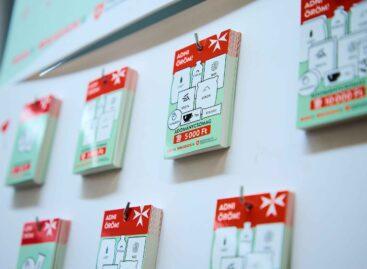Therapeutic cuteness or “crisis plush” – Labubu is the “little man’s Hermès bag”
My daughter is almost 11 years old and now, sitting on the crest of her 3rd or 4th “plush wave” with her, I wonder why these toy fads that appear cyclically every 3-5-7 years keep coming back again and again. Because for some reason, they always come back. There was already “Monchhichi fever”, “Furby” conquered, “Hello Kitty” took everything, “Stitch” was all the rage six months ago, and now this “Labubu madness”. The question that keeps running through my mind seems simple: why? – writes László Krisán in his recent post.
 But the answer may need to be sought much deeper than whether this is just another pop culture wave or another fashion hype. These figures are not just “cute” – they are hard-hitting reactions to something that is deep within the economy: uncertainty, crisis, loss of control.
But the answer may need to be sought much deeper than whether this is just another pop culture wave or another fashion hype. These figures are not just “cute” – they are hard-hitting reactions to something that is deep within the economy: uncertainty, crisis, loss of control.
In other words, we are forced to analyze economic crisis management and even policy effects when such phenomena surface. Of course, in the case of a little girl, this may not be so economically based, but everyone, including her, is certainly affected by daily events and the moods that overwhelm us.
The lipstick effect – when we console ourselves with small things in a crisis
According to an old observation by economists, during a recession, people reward themselves with “small luxuries”. This is called the “Lipstick Effect”. When there is a crisis, people either don’t have the money or don’t dare to spend on a car, TV, vacation or expensive bag, but it’s still worth it if we buy something that alleviates the bad mood a little, is affordable and, last but not least, gives joy and also ensures forgetfulness. A lipstick, a perfume, some small colorful item or even a Labubu….
In times of crisis, the economy is not shown in numbers, but in cute figures. Incidentally, this is perhaps the kindest and most humane form of crisis management: rewarding yourself with a cheerful figure. Of course, this is a substitute action and perhaps doesn’t make much sense, but at least it makes the even uglier days of ugly crises more beautiful.
Of course, it is a big change compared to the past that in the age of social media, TikTok and influencers, this phenomenon has accelerated, more specifically exploded, and “mini-luxury” products can become a global object of desire in a few weeks. It is no coincidence that many people now see the Labubu hype as a modern version of the lipstick index: “i.e., a reflection of the mood of a crisis”. The only difference is that today we see the face of the crisis not in the makeup mirror, but on the TikTok-for-you page. And all this is not a forward-looking direction, but rather an after-effect, a “consequence effect”. A society’s micro-reaction to macroeconomic anxiety. Scarcity as a business model – the psychology of artificial scarcity Every product is successful in a different way and for a different reason. Key elements of Labubu’s success:
- The artificial scarcity – which creates a continuous and hypnotic desire (see Rolex, Hermes)
- The “blind bag” system – when the buyer does not know which figure he will receive – and which makes consumption playful.
- The limited editions – the appearance of inaccessibility, the secondary market price of rare pieces – all build on the same principle: “What is harder to get, we want even more”.
This logic is not new. The luxury industry has been building on this for decades – only here in a democratized form. People used to stand in line for limited-edition shoes. Today, all it takes is someone opening a blind bag for the camera – and someone on the other side of the world already feels like they missed out on something. Scarcity is now an export commodity. And Labubu is the “little man’s Hermès bag”: not unaffordable, but still special, yet rare. And this is where one of the most powerful drivers of modern consumption comes in: FOMO (Fear of Missing Out). In the world of social media, possession is no longer just a matter of desire, but also of social presence.
The scarcity is therefore not only reinforced by the quantity of the product, but also by the limited online attention: “that is, if you miss out on the hype, you miss out on the conversation.” This “fear of missing out” is what makes Labubu fever not only an economic but also a cultural mass phenomenon. So social media does not merely mediate demand – it creates it. In the “age of scarcity,” we no longer hunt for products, but for attention—and sometimes we even get it blindly. This is how possession becomes status, shopping becomes experience, and rarity becomes currency.
Related news
Large companies expect easing inflationary pressures and decreasing public burdens
🎧 Hallgasd a cikket: Lejátszás Szünet Folytatás Leállítás Nyelv: Auto…
Read more >The GKI business climate index closed 2025 at a one and a half year high
🎧 Hallgasd a cikket: Lejátszás Szünet Folytatás Leállítás Nyelv: Auto…
Read more >KSH: industrial production decreased by 2.7 percent in October compared to the same period of the previous year, and increased by 0.5 percent compared to the previous month
🎧 Hallgasd a cikket: Lejátszás Szünet Folytatás Leállítás Nyelv: Auto…
Read more >Related news
(HU) Idei győztes sorrend: Grand Automotive East, Tesco Magyarország, Nestlé Hungária
🎧 Hallgasd a cikket: Lejátszás Szünet Folytatás Leállítás Nyelv: Auto…
Read more >Bagels, stuffed cabbage and online scams – this could be the Christmas menu for many due to the rise in cybercrime
🎧 Hallgasd a cikket: Lejátszás Szünet Folytatás Leállítás Nyelv: Auto…
Read more >25,000 packages of donations will reach people in need as a result of the 2025 Joy of Giving! fundraising campaign
🎧 Hallgasd a cikket: Lejátszás Szünet Folytatás Leállítás Nyelv: Auto…
Read more >






